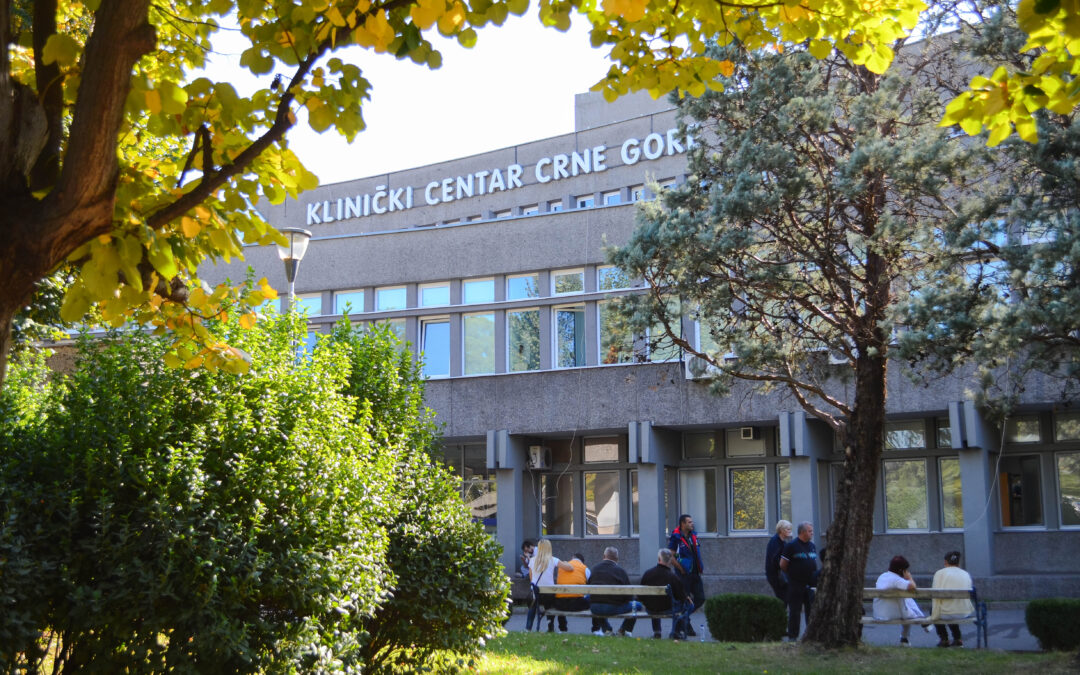The implementation of Heliant health information system in the largest Montenegrin healthcare facility – the Clinical Centre of Montenegro is underway. The Ministry of Health of Montenegro expresses great satisfaction with the benefits that both physicians and medical staff and patients have from the automation of the treatment process that Heliant Health provides.
-The complete project and operational team consisting of the Ministry of Health officials, representatives of the United Nations Development Program (UNDP) and the Clinical Centre of Montenegro are satisfied with the implementation of the Heliant health information system in KCCG to date, says Stevan Ljumović, Head of the Department for Integrated Health Information System in the Ministry of Health of Montenegro for heliant.rs.
It is a crucial project when it comes to digital transformation in healthcare, says Ljumović and adds that it implies complete informatization and IT integration of all systems in the Clinical Centre, which project will implement the business information system and so-called “smart management” (business intelligence).
The implementation was initiated at a very difficult period, especially for the healthcare system: in KCCG, Heliant’s team started working in early March, but had to stop on March 16 due to the health crisis caused by coronavirus pandemic. due to the health crisis caused by coronavirus pandemic.
It was continued in May – primarily owing to well-coordinated and organized activities of the Heliant team and our consortium were organized, says Stevan Ljumović.
During the summer, the second wave of the epidemic occurred, suspending the implementation again. The implementation was resumed in September and has not been interrupted to date. .
At this moment, Heliant health information system is fully implemented in six clinics of the Clinical Centre of Montenegro – Ophthalmology, Orthopaedics, Psychiatry, Thoracic, Digestive and Plastic Surgery Department as well as the Operating Block, Anaesthesia Block and Admission Department.
Last week, the implementation of the health information system was initiated at a particularly demanding clinic such as the Oncology Clinic and at the Vascular Clinic.
Mr. Ljumović says that during the last 7-8 years, computerization has been attempted in the Clinical Centre at least twice, but that it was not successful.
–Simply it was not accepted by the users, primarily by the highly educated medical staff. Ljumović says that physicians were not satisfied.
Most of Montenegrin physicians completed specialty studies at the Clinical Centre in Belgrade, as well as in other clinical centres in Serbia, where they used Heliant software and were satisfied with it, so they have now adapted without any problems.
-There were many remarks from physicians claiming that we wanted to make them typists. The fact is that they are the most expensive typists in the world, Ljumović jokes, thinking about the time that physicians have to set aside in order to enter treatment data for each patient..
The Heliant information system automates, speeds up and simplifies the entire process.
-If, so to say, 15 minutes was scheduled for the examination at earlier stage, it often happened that a physician, typing the diagnosis or anamnesis, spent about 10 minutes, so he/she had less time to examine the patient. Heliant software will significantly reduce the time for data entry, Stevan Ljumović points out.
He adds that in time, some data entry processes will be passed from physicians to nurses, as well as that they will be available to the entire medical staff who are authorized to perform such activity.
Ljumović notes that it is important that the treatment data is entered only once and that it will be available to all physicians and medical staff who are authorized to access the data.
The Head of the Department for Integrated Health Information System finds important also the fact that the Heliant Health application is web-oriented. n the second phase of the information system implementation, when the so-called automatic health record is developed in Montenegro, there will be a technical capacity that any physician in any healthcare facility may access the treatment data, subject to the patient’s consent, of course.
Therefore, in addition to speeding up the treatment process and increasing its quality, patients will also benefit from the fact that they will not have to carry treatment documentation from the Clinical Centre to other healthcare facilities.
Ljumović notes that the project of implementing information systems in KCCG, worth EUR 1.1 million, was entered into after a tender had been announced in which there were several bidders, that a five-member commission had made a unanimous decision, and that the entire procedure was approved by the UNDP headquarters without any remark.
